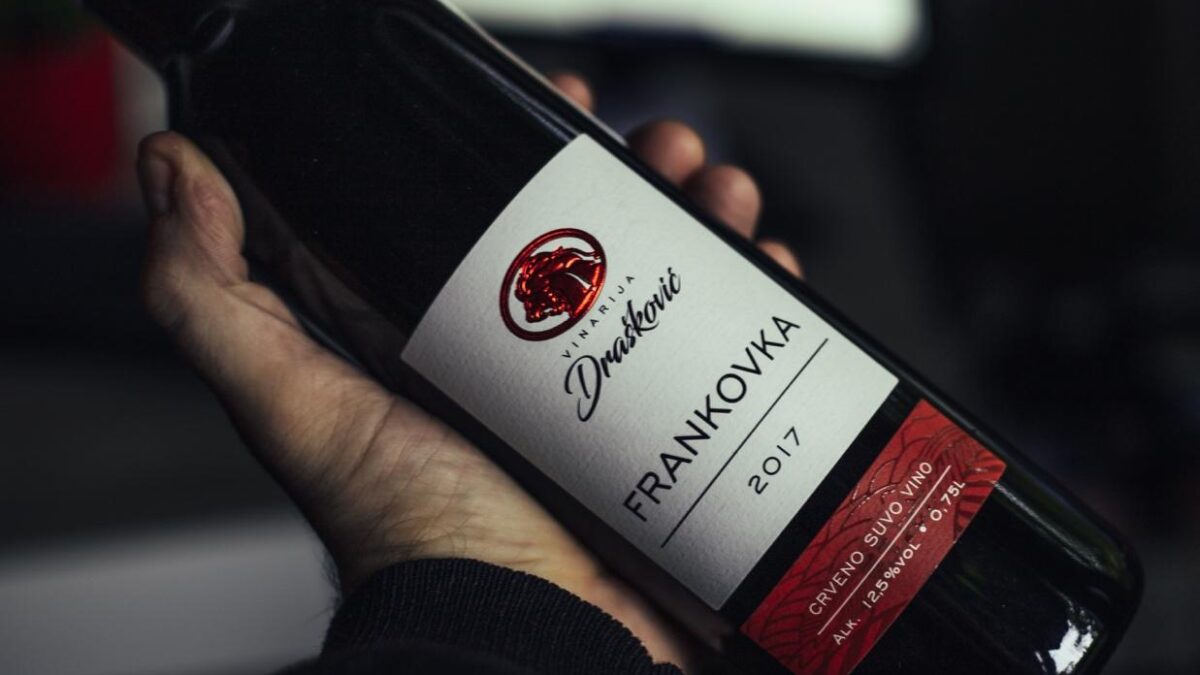Getting to know the labels adorning wine bottles is like reading the blurb of a novel before diving into its pages in the world of wine. Each bottle holds a story that must be unraveled. A wine bottle label often acts as a window into its contents, giving you a glimpse, a hint, or perhaps even a roadmap for the journey your palate is about to embark on.
Why are we delving into this topic, you might ask? Well, picture yourself in a charming online wine store page, surrounded by an array of bottles, each adorned with labels that range from classic to avant-garde. You’re on a quest to find that perfect bottle and buy wine online, but amidst the myriad of options, how do you decide? Understanding a custom wine label can be your guiding compass in this delightful voyage for a wine drinker. Moreover, with the convenience of online wine stores at your fingertips, you can explore and buy wine online with newfound confidence.
Now, let’s navigate this fascinating terrain of red and white wine bottle labels, breaking down the cryptic codes that winemakers inscribe on their bottles. The journey begins with a pivotal piece of information – the vintage.
Deciphering the Vintage
The year on the label refers to the wine production year, commonly known as the vintage. It’s worth noting that vintage red wine bottles do not necessarily consist entirely of grapes from a single year; regulations worldwide often require that a significant percentage, typically around 85%, of the wine must originate from that specific year. But here’s the twist: Vintage only denotes the production year, not the maturation period. Take, for instance, the illustrious Spanish wine Marques de Murrieta, the oldest family winery in Rioja, Spain. They released their 1942 Vintage Gran Reserva in 1983 after a staggering 40 years of maturation in American Oak barriques.
In certain wine bottles like Champagne, the vintage can signify quality. Producers reserve the crafting of vintage wines exclusively for the best years, resulting in exceptional bottles that capture a moment of perfection.
The Enigma of Reserve
The term “reserve” on a wine label can either denote something truly special or merely serve as a clever marketing strategy. In many European regions, particularly Spain and Italy, words like “reserve,” “riserva,” or “reserva” are tightly regulated. For instance, in Rioja, Spain, a red wine bottle labeled as “reserve” must undergo a minimum of three years of aging, with at least one of those years spent in an oak barrel before it’s deemed fit for release. This aging period extends to 38 months for Barolo and a whopping 62 months for Barolo Riservas.
Why all the fuss about aging? Well, it fundamentally transforms the wine’s composition. The oxidative atmosphere within oak barrels allows maximum oxygen contact, significantly altering the wine’s flavor profile. Over time, the wine’s aromas integrate beautifully, and its once-harsh tannins become velvety and smooth. Consequently, aged wines boast a complex aroma profile, a testament to the magic of time. However, it’s essential to remember that these regulations only pertain to aging time, not quality. Many winemakers choose their finest, low-yield, and old-vine grapes to create a well-balanced aged wine, elevating it to something truly extraordinary.
Grape Name or Location: Old World vs. New World
Ever noticed that Old World wines tend to emphasize the region more than the grape variety, while their New World wine producer counterparts prominently feature the grape’s name on the label? The reason behind this distinction lies in the differing winemaking philosophies.
Old World wine producers place a significant emphasis on the region itself, viewing it as a brand with strict regulations governing everything from winemaking techniques to permitted grape varieties. These wines serve as a reflection of the terroir – a complex interplay of factors like soil, climate, slope, aspect, microorganisms, and even tradition. For instance, if you order a Chateauneuf-Du-Pape and inquire about the grapes used, you might find it challenging to get a straight answer. That’s because this French region permits up to 18 different grape varieties, underlining the fact that, here, knowing the grapes isn’t the top priority; it’s the terroir that takes center stage.
In contrast, New World wines, with their relatively shorter winemaking history, are more experimental. New grape varieties, some never before used for winemaking, are continuously tested to find the best-suited ones for a particular area. The regulations are intentionally more lenient, allowing for this experimentation and data collection. Thus, you’ll frequently find New World labels adorned with the grape variety, sometimes accompanied by the region, especially if it’s a particularly distinctive one like “Stags Leap District-Napa Valley.”
The Final Sip
Beyond these key elements, wine labels often hold information about the winemaker, the winery’s history, and additional details to entice and inform the prospective wine enthusiast. Armed with this understanding, your journey into the world of wine becomes not just an exploration but a meaningful connection with the stories hidden within each bottle. Also, such as every alcoholic beverage, a wine bottle label must contain the alcohol content abbreviation.
Last but not least, let us encourage you to embark on your wine adventures, whether you are already a connoisseur or just getting started. Don’t forget to check out our BottleBarn blog while you’re shopping for wine online at an online wine store. Your wine experience will be enhanced by the wealth of knowledge you’ll find there, making every sip a memorable one.

